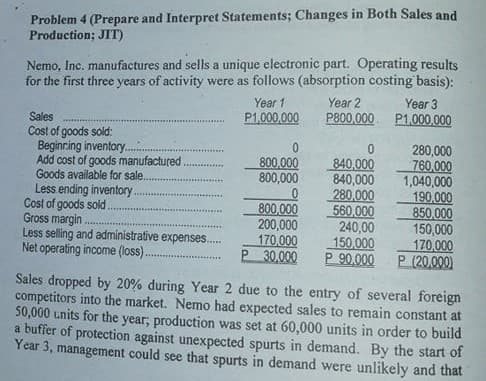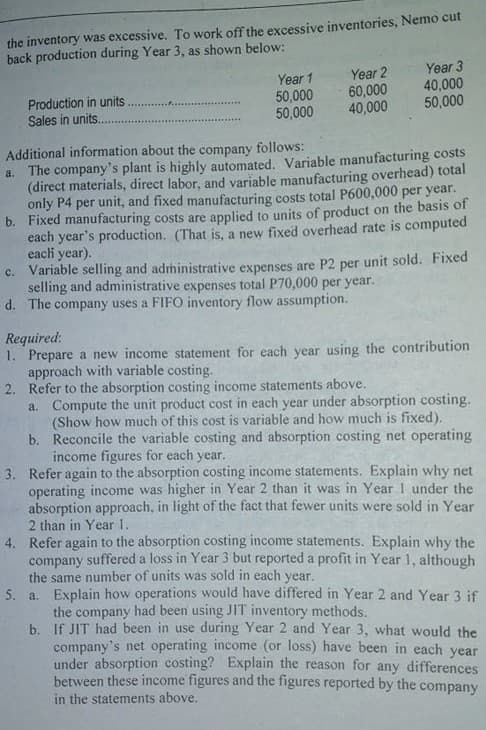1. Prepare a new income statement for each year using approach with variable costing. 2. Refer to the absorption costing income statements above. a. Compute the unit product cost in each year under absorption costing. (Show how much of this cost is variable and how much is fixed). b. Reconcile the variable costing and absorption costing net operating income figures for each year. 3. Refer again to the absorption costing income statements. Explain why net operating income was higher in Year 2 than it was in Year I under the absorption approach, in light of the fact that fewer units were sold in Year 2 than in Year I.
Process Costing
Process costing is a sort of operation costing which is employed to determine the value of a product at each process or stage of producing process, applicable where goods produced from a series of continuous operations or procedure.
Job Costing
Job costing is adhesive costs of each and every job involved in the production processes. It is an accounting measure. It is a method which determines the cost of specific jobs, which are performed according to the consumer’s specifications. Job costing is possible only in businesses where the production is done as per the customer’s requirement. For example, some customers order to manufacture furniture as per their needs.
ABC Costing
Cost Accounting is a form of managerial accounting that helps the company in assessing the total variable cost so as to compute the cost of production. Cost accounting is generally used by the management so as to ensure better decision-making. In comparison to financial accounting, cost accounting has to follow a set standard ad can be used flexibly by the management as per their needs. The types of Cost Accounting include – Lean Accounting, Standard Costing, Marginal Costing and Activity Based Costing.
Strategic Cost Management


Trending now
This is a popular solution!
Step by step
Solved in 5 steps with 4 images




